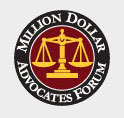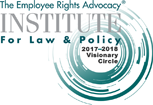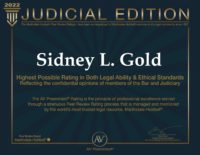What Stark Law Changes Should Doctors and Others Know about for 2022?
August 9, 2021
Doctors and health care employers have benefited from some loosening of Stark Law restrictions during the pandemic. These have been implemented to help physicians provide care more readily to patients and try to mitigate the spread and damage of the Coronavirus (COVID-19). These exceptions were integral in finding new solutions and creating novel ways to protect communities and allow health care systems more flexibility in supporting their hard-working professionals.
Although the exceptions established in 2020 are supposed to run through the state of emergency, which has been ended in some states, the formal end of these measures remains unknown. However, there are some new developments to acknowledge. Legislators have passed new rules affecting the Stark Law that will go into effect in 2022. These new guidelines will target certain practices such as in-office referrals for ancillary services and profit sharing among private practice groups.
How Does Stark Law Affect Practices and Health Care Employment?
Stark Law generally focuses on the potential for health care providers and physicians to find unique ways to maximize profits by referring in-system, either with a practice group or within the employer’s network, for certain health services. These prohibitions include:
- Clinical laboratory services
- Home health services
- Hospital services
- Medical equipment, devices, and supplies
- Occupational and physical therapy services
- Outpatient prescription services
- Radiation therapy services
- Radiology and other imaging services
- Speech pathology services
There are other rules regarding Stark Law that limit what employers or property-owning companies can provide to practicing physicians in terms of compensation, along with non-monetary compensation in the form of cost-savings for rent, usage of equipment, staffing, and related goods and services. Family members of physicians are also limited in seeking care from practices or other doctors who might have a financial relationship with the related physician.
Although the rules are fairly expansive and at times confusing, there are some exceptions that have been established. For instance, physicians can refer to colleagues in the same group practice. There are also allowances for in-service ancillary referrals. Providers can offer prepaid plans with certain restrictions. Exceptions also exist for academic medical centers, such as hospitals run by accredited institutions of higher learning, along with rules that affect rural practices that prevent patients from traveling substantial distances to receive necessary care.
Part of the reasoning behind Stark Law exceptions is to limit Medicare and Medicaid fraud, which costs billions to taxpayers and prevents care from being provided efficiently and consistently. These methods of fraud include:
- Family members presenting claims to Medicare for services rendered by institutions with whom the physician has a financial relationship
- Taking kickbacks for referring patients for Medicare or Medicaid-billed services
- Creating fictitious payments or billings for Medicare or Medicaid services
- Creating fictitious patients to bill Medicare or Medicaid for services
- Duplicating billing to receive multiple payments
- Altering employee salaries by classifying a physician as a teacher and paying as such despite providing no instruction to medical students
- Concealing financial arrangements with dubious bookkeeping procedures
- Lying about work-related duties for doctors and other employees
Violating Stark Law carries heavy penalties for offenders, including repayment of ill-gotten funds, fines, and penalties, along with potential state-mandated consequences, which could include the suspension or loss of medical licenses.
What are the New Stark Law Provisions for 2022?
The Centers for Medicare and Medicaid Services (CMS) provided new guidance for practices and health care providers that will take effect in January 2022. These rules focus on clarifying what is and is not permissible regarding profit shares and productivity bonuses. Here are some of the major provisions that become active when the calendar turns:
- Practices will no longer be able to develop profit distribution pools along service lines. The distribution model of split-pooling will require revisions starting next year and going forward.
- Physicians can be placed into segmented groups of five or more based on criteria, such as specialty, tenure, location, or full-time or part-time status, for new profit-sharing models provided that the grouping criteria do not correlate to the physician’s value or volume to the practice or employer.
- Practices and employers can treat these groups differently for the purposes of profit sharing and can use different profit distribution models for each group.
- Physicians may receive profits only from a single distribution pool.
- Practices and employers must use a single distribution model to pay all members of one group of physicians.
- Federal guidelines provide that not all profits accrued by a practice from provided health services have to be distributed.
- If a practice meets exemption requirements and aggregates all designated health services profits before distribution, the practice can distribute all profits to groups of fewer than five physicians.
The end of split-pooling will likely have significant ramifications on physicians’ contracts or compensation agreements. Notably, the ability for employers to remit some profits related to designated health services as part of bonus payments may shrink the amounts available to employees. However, it does create a direct correlation to the services related to a physician’s work and the profit sharing that individual can access.
The onus falls on employing practices and health care systems to devise new profit distributing models. The new guidelines came with enough lead time to allow for research and discussion of new methods, along with the opportunity to effectively communicate the proceedings and new strategy with employees. It is likely no two employers will reach identical solutions for physicians. Of course, the yearlong process also invites state and local legislatures to provide additional guidance for profit sharing, especially when it comes to state-funded services. Physicians are encouraged to be proactive with their employers in discussing new profit-sharing models and provide input.
How can Physicians Avoid Stark Law Violations?
There are two main categories for Stark Law violations. Substantive violations happen when there is an overt and likely intentional breaking of known rules, such as directly referring Medicare or Medicaid patients to a health care provider with whom the referring physician has an established financial relationship. Technical violations often happen with the nuances of complicated paperwork and exempted contracts, like auxiliary in-network services or employment relationships.
Substantive violations are far more egregious and carry severe penalties. However, they also seem easier to avoid, as they refer to the more basic aspects of Stark Law and following best practices that should be established and followed consistently. Generally, if it seems questionable or raises concerns, it should not be done.
Technical violations often come from clerical errors, such as not updating files or not correctly filling out paperwork. Oftentimes these violations are harder to avoid. Even exemptions to Stark Law, like the rental of office space or equipment, can cause a technical violation if not structured correctly. This requires more scrutiny and attention to detail. Although they may seem more venial, technical violations carry many of the same penalties as substantive violations.
The changes to the Stark Law rules taking effect next year may open the door to new violations. It is imperative for physicians to carefully review contracts, fully understand new profit distribution models, and avoid temptation to recoup some possible lost compensation with dubious practices. Conversely, the onus falls on employing practices and health care providers to continue to follow established procedures and make sure new methods and guidelines do not violate existing or new laws. Although these renegotiations may be tense and unpleasant, all parties should try to maintain professional decorum and decency, even if the other side does not.
Philadelphia Physician Lawyers at Sidney L. Gold & Associates, P.C. can Work with You for Contract Negotiations and New Profit Distribution Models
It can seem unfair or disrespectful to hard-working physicians that they may lose compensation with the creation of new Stark Law regulations that will change long-established profit-sharing policies. However, there is a way to protect what you have built and earned with your employer. The Philadelphia physician lawyers at Sidney L. Gold & Associates, P.C. have the experience and insight to work through contract negotiations and defend your best interests. Call us today at 215-569-1999 or contact us online for a free consultation. Located in Philadelphia, Pennsylvania, and Pennsauken, New Jersey, we serve clients in Wilkes-Barre, Scranton, northeast Philadelphia, Bucks County, Chester County, Delaware County, Montgomery County, and Cherry Hill, South Jersey.




























